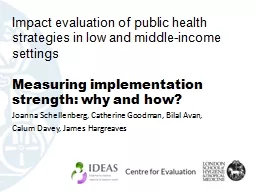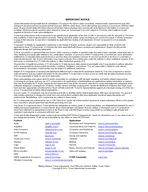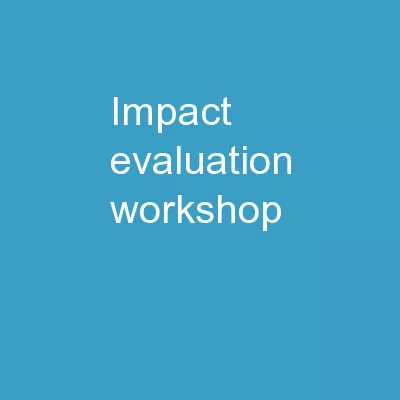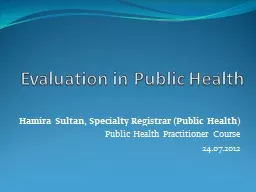PPT-Impact evaluation of public health strategies in low and middle-income settings
Author : pamella-moone | Published Date : 2018-12-05
Measuring implementation strength why and how Joanna Schellenberg Catherine Goodman Bilal Avan Calum Davey James Hargreaves Outline Context Problem Three
Presentation Embed Code
Download Presentation
Download Presentation The PPT/PDF document "Impact evaluation of public health stra..." is the property of its rightful owner. Permission is granted to download and print the materials on this website for personal, non-commercial use only, and to display it on your personal computer provided you do not modify the materials and that you retain all copyright notices contained in the materials. By downloading content from our website, you accept the terms of this agreement.
Impact evaluation of public health strategies in low and middle-income settings: Transcript
Download Rules Of Document
"Impact evaluation of public health strategies in low and middle-income settings"The content belongs to its owner. You may download and print it for personal use, without modification, and keep all copyright notices. By downloading, you agree to these terms.
Related Documents














